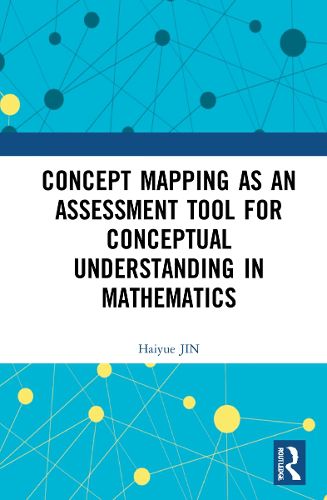Readings Newsletter
Become a Readings Member to make your shopping experience even easier.
Sign in or sign up for free!
You’re not far away from qualifying for FREE standard shipping within Australia
You’ve qualified for FREE standard shipping within Australia
The cart is loading…






This book investigates the practicability and effectiveness of the concept map as a tool for assessing students' conceptual understanding in mathematics.
The author first introduces concept mapping and then employs it to investigate students' conceptual understanding of four different mathematical topics. Alongside traditional scoring methods, she adopts Social Network Analysis, a new technique, to interpret student-constructed concept maps, which reveals fresh insights into the graphic features of the concept map and into how students connect mathematical concepts. By comparing two traditional school tests with the concept map, she examines its concurrent validity and discusses its strengths and drawbacks from the viewpoint of assessing conceptual understanding. With self-designed questionnaires, interviews, and open-ended writing tasks, she also investigates students and teachers' attitudes toward concept mapping and describes the implications these findings may have for concept mapping's use in school and for further research on the topic.
Scholars and postgraduate students of mathematics education and teachers interested in concept mapping or assessing conceptual understanding in classroom settings will find this book an informative, inspiring, and overall valuable addition to their libraries.
$9.00 standard shipping within Australia
FREE standard shipping within Australia for orders over $100.00
Express & International shipping calculated at checkout
This book investigates the practicability and effectiveness of the concept map as a tool for assessing students' conceptual understanding in mathematics.
The author first introduces concept mapping and then employs it to investigate students' conceptual understanding of four different mathematical topics. Alongside traditional scoring methods, she adopts Social Network Analysis, a new technique, to interpret student-constructed concept maps, which reveals fresh insights into the graphic features of the concept map and into how students connect mathematical concepts. By comparing two traditional school tests with the concept map, she examines its concurrent validity and discusses its strengths and drawbacks from the viewpoint of assessing conceptual understanding. With self-designed questionnaires, interviews, and open-ended writing tasks, she also investigates students and teachers' attitudes toward concept mapping and describes the implications these findings may have for concept mapping's use in school and for further research on the topic.
Scholars and postgraduate students of mathematics education and teachers interested in concept mapping or assessing conceptual understanding in classroom settings will find this book an informative, inspiring, and overall valuable addition to their libraries.